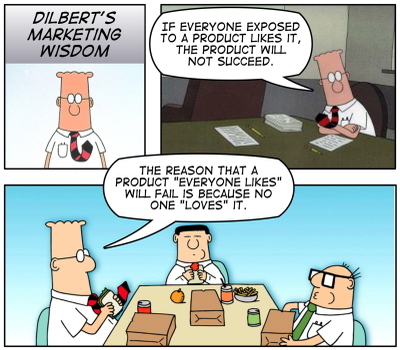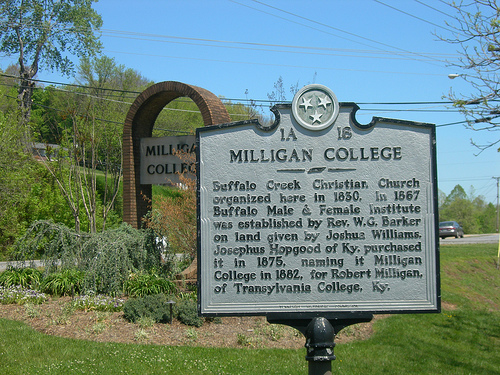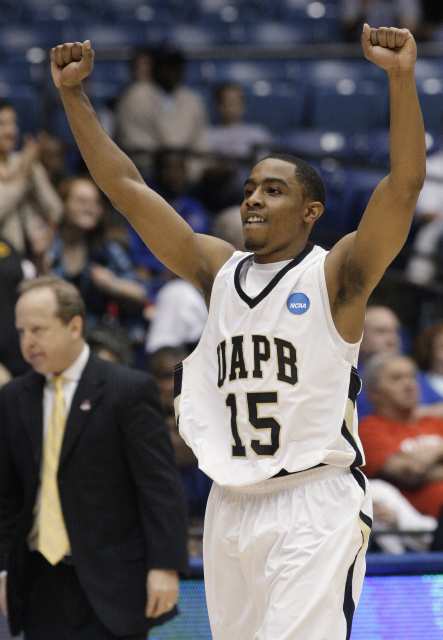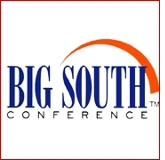Checking in on… the Big South
Posted by rtmsf on December 25th, 2010Mark Bryant, Coordinator of New Media for the Big South Conference and writer of Big South SHOUT, is an RTC correspondent.
A Look Back
- Giant Killers?!? Presbyterian College defeated Auburn and Wake Forest on the road in consecutive games over the past week, while Coastal Carolina notched a big-time win at Louisiana State recently… put those up alongside earlier ACC-SEC upsets, with UNC Asheville toppling Auburn and Winthrop downing Wake Forest, and the conference has a growing list of notable wins. The wins over Charlotte by CCU and Gardner-Webb also moved up a notch once the 49ers upended Tennessee (although in fairness, Charlotte beat Winthrop). So yes, Auburn and Wake would each be 0-2 in the Big South right now… go figure.
- Return to Earth. And while the Big South’s brief ownership of a winning record against the SEC was enjoyable (at 3-2 through 12/20), two days quickly turned that back to reality, with a High Point loss at Georgia on the 21st and losses by Winthrop at Kentucky and Radford at Florida to bring the season mark to 3-5. That still smacks of respectability, as does the 2-4 mark against the ACC, particularly when compared to records vs. other power conferences: the Big East (0-6), Big Ten (0-2), Pac-10 (0-1) and Big 12 (0-4), a cumulative 0-13. Still, that can be understood, but far more troubling is a 1-10 total against the Colonial (Liberty’s win over William & Mary the lone bright spot there).
- Greetings! Coastal Carolina’s Mike Holmes, a transfer from South Carolina, became available last week and made the most of his entrance. Holmes came off the bench for the Chanticleers in Baton Rouge and put up a double-double against LSU in his debut (14 points, 10 rebounds). No doubt the others in the Big South took notice of the arrival of a significant new player to watch.
Power Rankings
- Coastal Carolina (10-2 / 1-0)… the Chanticleers have made it eight in a row and sit idle until New Year’s Eve with struggling Radford coming to CCU’s floor. The hallmark win is the overtime victory over LSU, but this is undeniably a team on a roll, and one that just got better with the addition of Mike Holmes to the active roster. You have to say that Coastal is the team to beat right now.
- Presbyterian College (6-6 / 1-1)… where do I get off vaulting a team I had low last time, and one with a .500 record, into the second spot? Show me another squad here that knocked off back-to-back power conference teams on the road and I’ll consider them for this slot… frankly, this week, PC has earned the “number two with a bullet” position after wins at Auburn and Wake Forest (even if those teams are apparently having down years). By the time most folks read this, we’ll know if the Blue Hose added a win at Old Dominion to cement their right to this space or if they are easing back down the list.
- Liberty (7-6 / 2-0)… aside from bringing PC from the bottom to the top, the rest of the order pretty much stays the same, as we haven’t seen much to change opinions–most teams had something disappointing along the way, or simply wins over lesser opponents. For Liberty, the disappointment remains the inability to win a true road game. Home or neutral: 7-1. Road: 0-5… including the last loss to Hampton. The Flames would drop, but other than PC, no one’s ready to jump.
- High Point (5-5 / 2-0)… for the Panthers, the last home game was 12/4 and the next one is not until 1/13/11. Like Liberty, that doesn’t bode well for a team with a bad home-road split: 4-1 at the Millis Center, 1-4 everywhere else. But also like the Flames, HPU is 2-0 in conference play, so we’ll keep them in the upper group for now.
- Winthrop (5-7 / 1-1)… uneven and inconsistent early season play–we’ve said that about Winthrop before… last year, in fact. Somewhere in the middle of conference play a season ago, the Eagles lit a fire and got where they needed to be and made it all the way to the NCAAs. It may take a little more to overcome Coastal again this season, but I never count Winthrop out of the running.
- VMI (7-5 / 0-2)… standard operating procedure continues–pile up points and hope it’s enough. So far this year, it’s worked more often than not, but not in the Big South games. Heading back into league competition, it will be interesting to see what the Keydets will really bring to the table.
- Gardner-Webb (6-8 / 1-1)… life for the Runnin’ Bulldogs will depend greatly on when they can have leading scorer Jon Moore back from injury. Without him, the team lacks some of the intensity and certainly the scoring threat they need to be a contender.
- UNC Asheville (5-6 / 1-1)… here’s another squad with sweet home cooking–the Bulldogs have won 12 in a row at the Justice Center (dating back to last season). Asheville could be ready for a rise, given the next two Conference games will both be in that intimate gym.
- Charleston Southern (5-6 / 0-1)… looking for an identity still from a team that has gotten its wins by pounding small schools, often scoring more than a hundred in those games, and losing to large schools and peer programs. The “best” win CSU has is probably the one over The Citadel. Until we see evidence that the Bucs can hang with stiffer opposition, they hang near the bottom.
- Radford (2-9 / 0-2)… run that losing streak to nine for the Highlanders…yes, that’s right, they won the first two and haven’t notched a W since 11/14. Things have not been looking so rosy for RU lately, and is may not be getting better, with the next game at a red-hot Coastal Carolina team on New Year’s Eve.
A Look Ahead
Okay, we made it: conference play time is here for real. We had that early December appetizer of Big South games, but the men’s teams launch the league schedule in earnest on New Year’s Eve with a full complement of games. Play continues on January 2 and rolls on a regular calendar from there to the end. Contenders, pretenders, champions, also-rans… some of that has been hard to peg of late, but now we will know where these teams stand head-to-head. And THAT will make this a Happy New Year!




















































